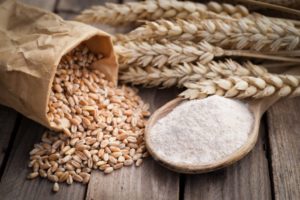Italian wheat, the norms to guarantee a great quality
Italian wheat, the norms to guarantee a great quality
Fosca Tortorelli
 The world of wheat and the products that are obtained from its processing and transformation is a topic of great relevance, yet there is lots of confusion and disinformation on its nutrition facts .
The world of wheat and the products that are obtained from its processing and transformation is a topic of great relevance, yet there is lots of confusion and disinformation on its nutrition facts .
Over the past years, various set of problems are hitting the use of this noble and ancient spike, mainly the signs of intolerance or allergy that affect more and more people nowadays and the celiac and gluten-free fashion or the fear of carbohydrates.
Luckily, there is also an interest from young and small virtuous companies – especially in Tuscany, Marche, Sicily, Campania and Molise, – which are working hard on the theme of wheat and on the topic bakery / pasta making . Wheat or grain is a cereal of ancient culture, related to the area located between the Mediterranean Sea, the Black Sea and the Caspian Sea; it is divided into two types, the tender, easily crushed and the hard, from which the semolina is obtained. In Italy, mainly thanks to the legislations that regulate the production, the cultivated wheat, certainly, gives a major guarantee of quality. An example is the entry into force of the Decree no. 113552/2017 of the Ministry of Agricultural, Food and Forestry Policies, which establishes that, on the label of every pasta package, the terms “the wheat cultivation’s country” (specifying the country where the durum wheat was cultivated) and “Milling country” (specifying the country in which the durum wheat semolina was obtained) must be reported; instead, if the grains and the semolina were grown and obtained in several countries, there has to be an indication of the place in which the single operation was performed.
Another fundamental element, when it comes to the quality of the durum wheat, and therefore of the bread or the pasta, remains the protein content of the cereal. The Italian countryside has a rich and wide range of grains that must be protected, besides we should also have the desire to look beyond and become aware of climate change. On this matter, the work that is taking place in Sicily is fascinating, it concerns the productive recovery and the study of some varieties of wheat, such as Tumminia, Russello, Perciasacchi, which are constantly requested and appreciated, or Biancolilla and Bidí from the area of Trapani, which are giving excellent results.
It is also important to consider the initiative, of many structured companies, to increase the production of Italian wheat using experimental fields; the increase of the yields, in recent years, has also been achieved thanks to agreements between industries, with the signing of multi-year production chain contracts between agriculture, cooperation and industries that have set themselves the objective of guaranteeing farmers a safe income. An example is the case from Puglia, where the Casillo Group, the Public Service Company for the person Dr. Vincenzo Zaccagnino, Coldiretti and the Puglia Region are involved; for the next 3 years on 600 hectares of the Zaccagnino public company of San Nicandro Garganico only 100% Italian durum wheat will be cultivated, which will then be purchased by the company Molini Casillo.
Nowadays, Italy does not produce enough durum wheat to meet the needs of the pasta industry, so it is necessary to look at the future, carrying out research activities in a systematic way in order to find any new genotypes and to field new agronomic technologies to improve the fertility of the lands, using less and less phytosanitary treatments.
In this way we would enhance our production and reduce the importations; keeping in mind the importance to inform and make the consumer aware and free to choose the product he prefers.
Bibliography/Sitography
• Bindi G., Grani antichi. Una rivoluzione dal campo alla tavola, per la salute, l’ambiente e una nuova agricoltura, Terra Nuova Edizioni, 2016
• Lazzaroni L., Altri grani, altri pani, Guido Tommasi Editore, 2017
• http://www.fidaf.it/index.php/la-qualita-dei-grani-duri-la-produzione-nazionale-e-pari-o-superiore-a-quella-dei-grani-duri-di-qualita-importati/#
• http://www.tradingonlineguida.com/materie-prime/trading-grano/
• https://www.repubblica.it/economia/rapporti/osserva-italia/mercati/2018/06/22/news/industria_pastaia_aumenta_la_domanda_di_grano_duro_italiano-199699180/
• http://www.mercatigrano.it
• https://ilfattoalimentare.it/pasta-italiana-grano-duro-cubadda.html
• https://agronotizie.imagelinenetwork.com/agricoltura-economia-politica/2018/06/08/grano-duro-c-e-spazio-per-il-prodotto-nazionale/59036
